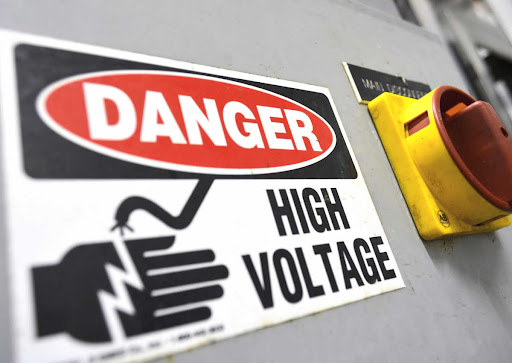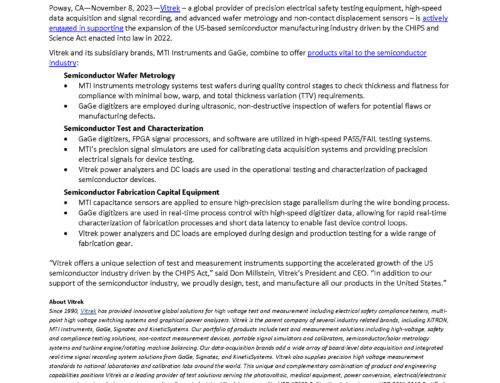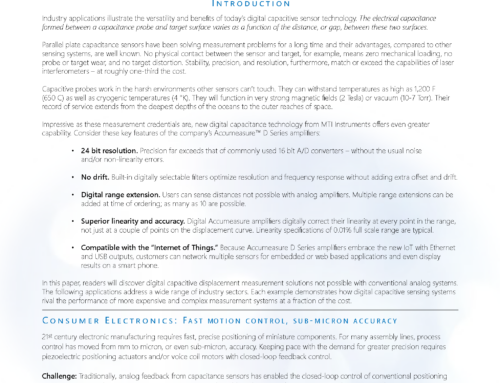
Hipot testing is necessary for ensuring the electrical safety compliance of electronic equipment. However, testing the voltage on commercial equipment can result in errors and even death if the operators have not been properly trained on the importance of establishing a safe testing environment. Before any tests are performed, operators should be thoroughly trained on the effects of electrical currents on the human body, the importance of safety interlocks, and how to program the necessary tests and store them in memory. If operators lack the appropriate training, setting up a safe hipot testing workstation would be for naught. After prioritizing safety training, use these recommendations to create a safe testing area.
Decide Where the Testing Station Will Reside
Hipot testers generate voltages that can cause harmful or fatal electric shocks. For this reason, it’s essential to set up a testing area that cannot be easily accessed by untrained employees. It should ideally be isolated from the factory assembly area and the main flow of activity. If it is not possible to locate the testing station in another part of your facility, you should mark it off with rope or safety barriers and warning signs. Regardless of whether the station is separated from or part of the work area, it shouldn’t be possible for other employees and passersby to walk into the testing area. Use internationally recognized signage and hipot tests with indicator lights to clearly mark the presence of high voltage testing.
Ensure Adequate Power
When considering the location of your hipot testing station, make sure it will have access to a reliable power source. The wiring and outlets should meet electrical code requirements for grounding and polarization to avoid operator injury during testing.
Additionally, each testing workstation should have a power switch prominently marked at the entrance of the work area. In this way, power can be cut quickly and safely if an emergency were to occur. It’s important to note that an operator should never remove power from the hipot tester. If there’s a power interruption, leave the device under test (DUT) connected to the tester until power is restored and the test can finish its discharge function.
Avoid or Take Extra Precautions With Metal Objects
The presence of metallic objects in hipot testing areas can cause erroneous readings of leakage and significant injuries. To avoid complications, the workbench should consist of non-metallic materials, and no metal objects should be placed between the operator and DUT. If metal objects are present, they should be grounded; otherwise, they should be kept out of the testing area altogether.
Create Enough Space Within the Workstation
Proper spacing is critical when setting up a hipot testing workstation. The operator should have enough space that they never have to reach over the DUT to access the hipot tester. Ideally, the DUT would be isolated from the operator and tester. In addition to providing the operator with adequate space to work, the tester should be positioned at least three inches from the wall for proper airflow. If a DUT or tester is wheeled to the testing area, it should be placed on a non-conductive cart with locking wheels.
Position the Testing Equipment Appropriately
A test operator should never have to reach over a DUT to conduct a test. To prevent this from happening, the test equipment should be positioned on the workbench so that the operator does not have to turn or take their eyes off the DUT. This setup will enable them to stay aware of their surroundings and minimizes the chances of the operator accidentally touching the DUT.
Circuit palm switches are often recommended to minimize the chances of the operator encountering high voltages during testing. To operate a palm switch, the operator must place both hands on the buttons and press them down simultaneously. This ensures the safe and quick operation of the hipot tester. An alternative option is a foot switch.
Include Safety Features
Additional safety features used in hipot testing workstations are guards or enclosures. These enclosures should be non-conducting and have safety interlocks to interrupt high voltages when the interlocks are opened. An enclosure provides a reliable way to protect the operator’s safety, especially when longer tests are being performed.
Secure Your High Voltage Testing Equipment From Vitrek Today
Conducting high-voltage testing with hipot testers and other measurement instruments requires extensive safety measures. While optimizing the setup of your testing workstation, consider the quality and precision of your testing equipment. Instruments like the 4700 Precision High Voltage Meter and high voltage SmartProbes can improve operators’ safety and accuracy. If your testing equipment’s performance is lacking, upgrade your instruments today by placing an order online at Vitrek!


